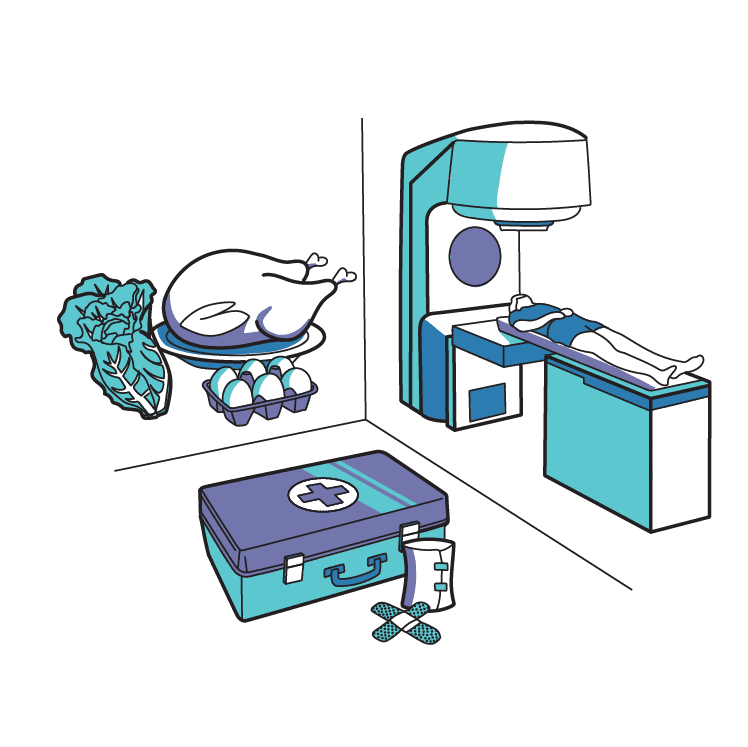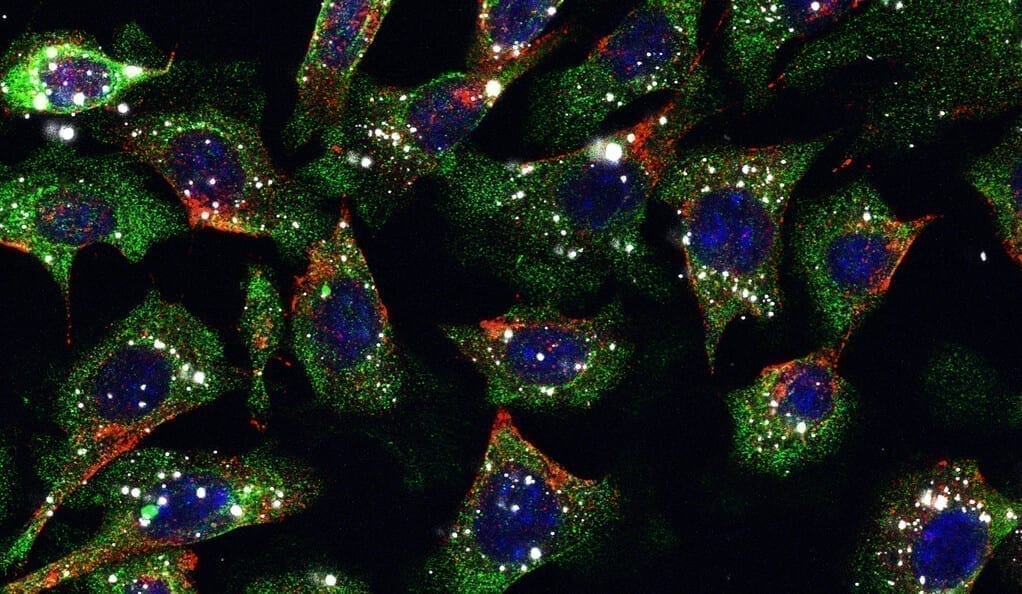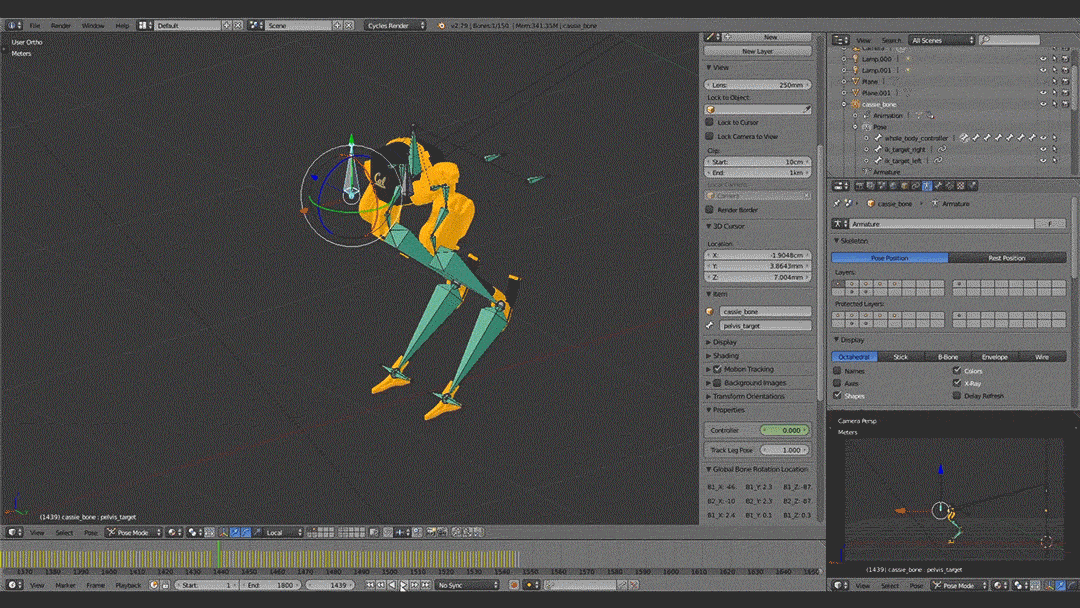
via LANL
An invention from Purdue University innovators may provide a new option to use directed energy for biomedical and defense applications.
The Purdue invention uses composite based nonlinear transmission lines (NLTLs) for a complete high-power microwave system, eliminating the need for multiple auxiliary systems. The interest in NLTLs has increased in the past few decades because they offer an effective solid-state alternative to conventional vacuum-based, high-power microwave generators that require large and expensive external systems, such as cryogenic electromagnets and high-voltage nanosecond pulse generators.
NLTLs have proven effective for applications in the defense and biomedical fields. They create directed high-power microwaves that can be used to disrupt or destroy adversary electronic equipment at a distance. The same technology also can be used for biomedical devices for sterilization and noninvasive medical treatments.
“We created a new NLTL device that reduces the bulkiness of current options and offers new opportunities to protect our country and help patients in a man-portable form factor,” said Andrew Fairbanks, a Ph.D. student and graduate research assistant in Purdue’s College of Engineering. “In engineering, we are concerned about size, weight, power and cost. Our invention helps address all of these.”
Allen Garner, an associate professor of nuclear engineering, led the Purdue team. The researchers created a novel device using composite-based NLTLs as complete high-power microwave systems, encompassing high-voltage pulse and high-power microwave formation. The Purdue device combines the elements of traditional NLTLs into a composite-based system and eliminates typical bulky auxiliary equipment.
The system is charged using a DC high-voltage supply and discharged using a high-voltage, gas-based switch. The system eliminates the need for external pulse generation and is more rugged due to the solid-state construction.
Original Article: All-in-one device uses microwave power for defense, medicine
More from: Purdue University
The Latest Updates from Bing News & Google News
Go deeper with Bing News on:
Directed energy
- Lady Gaga Announces Self-Directed ‘Chromatica Ball’ Concert Film: Watch the Trailer
“Lady Gaga is a complete powerhouse,” Nina Rosenstein, executive vp of HBO Programming, Late Night & Specials, said in a statement. “She’s a once-in-a-lifetime artist who never holds back, and Gaga ...
- The Coming of Age of Directed Energy Weapons and the Red Sea Crisis
Red Sea Topic Week. By Dr. Bonnie Johnson. The recent crisis in the Red Sea has escalated from Houthi drone and missile attacks on commercial ships to a major Iranian-led, Houthi- ...
- Laser Frontiers: Nation's Race to Harness Directed Energy Weapons
This surge in interest and investment is driven by the potential of DEWs to provide a cost-effective, accurate, and swift response to emerging threats, notably unmanned systems proliferating in modern ...
- Vietnam Directed Energy Weapons Market Demand, Size, Share, Top Players, Growth and Forecast to 2024 to 2032
According to the latest report by Report Ocean, titled this “Vietnam Directed Energy Weapons Market” Report gives evaluation and insights primarily based on authentic consultations with necessary ...
- Russia renews attacks on the Ukrainian energy sector
KYIV, Ukraine -- Russia launched a barrage of missiles against Ukraine overnight, in attacks that appeared to target the country’s energy infrastructure. Meanwhile, Russia said its air defense systems ...
Go deeper with Google Headlines on:
Directed energy
[google_news title=”” keyword=”directed energy” num_posts=”5″ blurb_length=”0″ show_thumb=”left”]
Go deeper with Bing News on:
High-power microwave system
- U.S. Military Is Using Laser Weapons In Battle
Prototype laser air defense systems deployed by the U.S. Army have taken out enemy drones in the Middle East, an Army official told Forbes.
- The age of the solar sail is arriving sooner than expected
A recent study published in Phys.org suggested that a probe propelled by a solar sail could reach Mars in just 26 days. By contrast, probes using conventional rockets take between 7 to 9 months. A ...
- Albuquerque's Verus Research signs $28 million US Army Contract
The company specializes in research and development of radio frequency communications for high-power microwave systems and nuclear engineering, with extensive modeling, simulation, testing and ...
- High power cables uniquely engineered for extenuating circumstances
High power microwave coaxial cables have unique requirements, as well as several potential damage mechanisms that can compromise their performance. As a result, Flexco Microwave KW- and S-series ...
- Iranian and Chinese Drones Are Overwhelming American Warships—But This High-Tech Weapon Could Help Them Fight Back
But while Leonidas is a compact, solid-state system, THOR is based on magnetrons, an older technology, and takes up an entire shipping container. “In terms of current HPM [High Power Microwave ...
Go deeper with Google Headlines on:
High-power microwave system
[google_news title=”” keyword=”high-power microwave system” num_posts=”5″ blurb_length=”0″ show_thumb=”left”]










